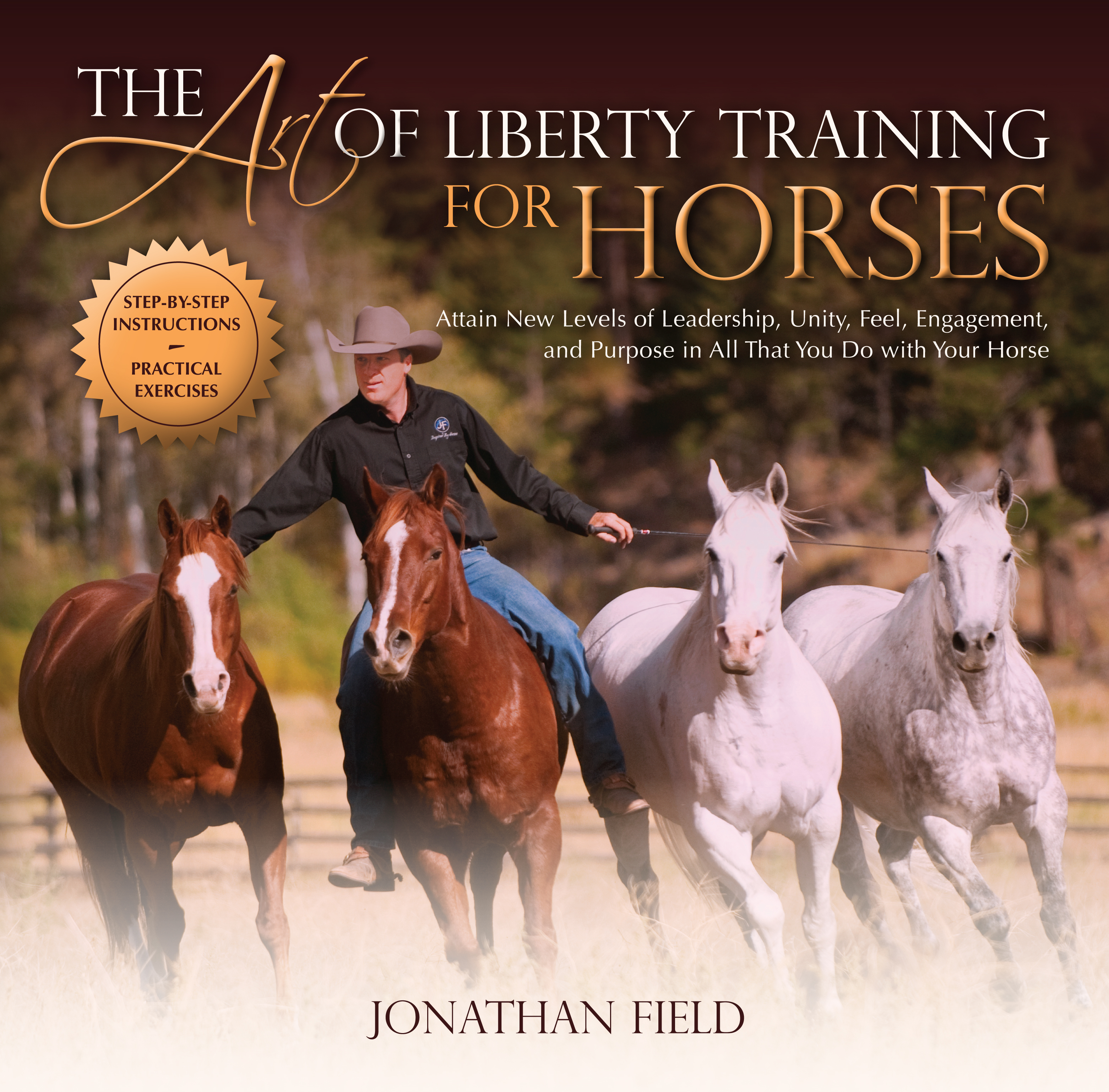Editor’s Note: Jumper Nation has partnered with Trafalgar Square Books to bring you excerpts from some of their new and favorite titles – From biographies to instruction and everything in between. So make yourself a latte and browse the digital equine bookstore with us!

Image courtesy of Trafalgar Publishing
Finding a “Sweet Spot” for the Anxious Jumper
Horseman Jonathan Field may be most often seen in a cowboy hat, but he is great over fences—he even has a DVD series he developed with George Morris! Here he shares the story of one troubled horse and how the liberty training techniques he’s famous for helped them find a way forward.
Many years ago I took on Tommy, a Hanoverian/Standardbred jumper that was given to me for free. I was his last resort. A powerful 16.3 hands, he had been a very expensive horse. Unfortunately, when he progressed to higher jumps, Tommy got overwhelmed with the pressure. He would get excited and bolt into an uncontrollable panic that left a rider feeling lucky to survive.
I was told that Tommy wasn’t ever easy to ride, and it got worse when jumps were present. He’d start at a nice working trot, but as soon as he was pointed at the first jump, he would speed up twice as fast. Two jumps later, he’d be even faster, and finally, he’d bolt. Soon, the sight of a jump would cause a bolt reaction.
Normally, doing something as physical as jumping would use up a lot of nervous energy in a horse, but not Tommy. He had so much going on in his head that his brain was still coming unwired. He just couldn’t find ease in movement, and he had no “active neutral” when it came to jumps. “Neutral” is what I call when the horse is at a standstill with ease—his “sweet spot.” And “active neutral” is when he maintains that same relaxation while moving.
Recognizing this, I knew how to help Tommy. I started with one very low jump. I pointed him at it and we went over. Of course, he got revved up and went quite fast.
I immediately stopped, and turned him around to wait quietly in a neutral sweet spot—his mental and physical comfort zone—facing the jump. Once he was calm, we went over the jump again. Tommy was still worked up, but again we stopped, faced the jump and parked in a sweet spot on the other side.
We continued like this about 50 times, until he could approach the little jump calmly, keeping his active neutral. Then, I ended the session.
Later that afternoon, I repeated the exercise. That time, it only took Tommy about 20 times for him to relax.
I built Tommy’s confidence one jump at a time—with very short, concise lessons. I kept moving him around the arena until he found active neutral, and then stopped in a sweet spot. His reward would come when he tried to relax.
Over the course of a few weeks, Tommy could eventually jump completely at ease over a low course. By then, he was safe to ride outside: jumping natural obstacles and even moving cattle. Eventually, he got so consistent that I could even use him as a novice-rider lease horse in my clinics.
The key with a horse like Tommy is recognizing the weak link in the communication between horse and human. In his case it was neutral, which is very common for performance horses. They come in the arena, are worked hard, and only rest back at the barn. Neutral or active neutral is not a part of their training program. So, with each ride they get a little more wired from anticipation. Because of those nerves, their flight instinct gets closer to the surface.
Flight instinct can’t be taken completely out of any horse, and I never took it out of Tommy. I just recognized the best way to help him was to recreate the arena so it became a place of comfort, relaxation, and connection to his rider. I also had to keep him moving in a controlled way when he wasn’t connected to me.
I gave Tommy a choice about calming down and listening. He could become excited, prancing around and tight, or begin to relax and be rewarded with the neutral sweet spot. After he realized that, he learned he could get relief, and he began to look for it. As a result, he became a relaxed and dependable riding horse.
This excerpt from The Art of Liberty Training for Horses by Jonathan Field is reprinted with permission from Trafalgar Square Books (www.horseandriderbooks.com).
